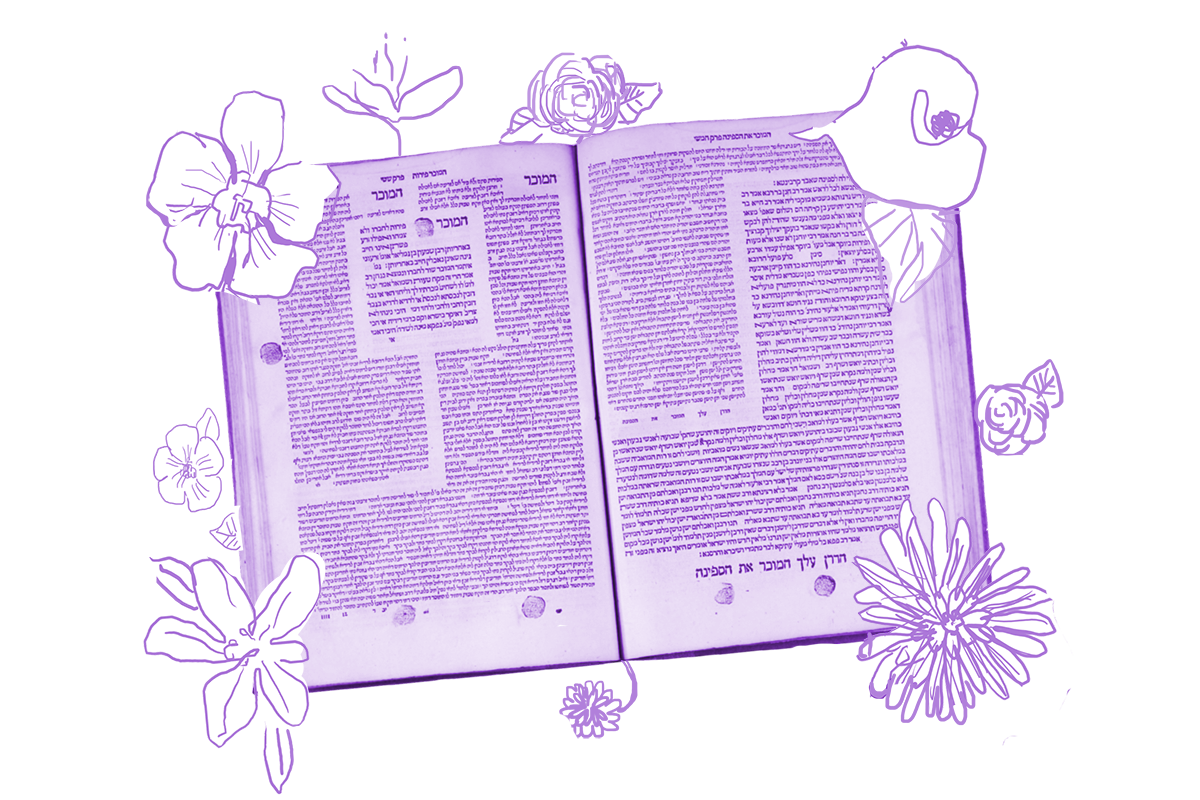“Life is like a box of chocolates. You never know what you’re gonna get.” With this unforgettable observation, Forrest Gump’s mother, played by the inimitable Sally Field, teaches her son (and us) that life can be both delicious and random. Such is the rhetorical power of a good analogy.
The rabbis don’t just enjoy analogies for their wittiness — they use them as tools to understand the Torah’s injunctions, to explain ambiguities and determine God’s will more clearly. Today’s daf lets us peek behind the curtain of talmudic logic to see how the rabbis evaluated their own analogies.
The context is the discussion of the precise way in which the high priest sprinkled the blood of the Yom Kippur goat offering near the kaporet, the golden lid that covered the Ark of the Covenant in the Temple, on Yom Kippur. The rabbis agree that one must sprinkle the blood upward directly onto the kaporet once – but how many times must the high priest sprinkle the blood downward in its general direction?!
The rabbis offer the following answer:
With your help, My Jewish Learning can provide endless opportunities for learning, connection and discovery.
It states that blood is sprinkled downward in the case of the bull, and it states that blood is sprinkled downward in the case of the goat. Just as the blood that he sprinkles downward in the case of the bull consists of seven sprinklings, as the verse explicitly states: “And before the Ark cover he shall sprinkle seven times” (Leviticus 16:14), so too, the sprinkling of the blood downward in the case of the goat is performed seven times.
Here, the rabbis draw an analogy between the bull, which the high priest offers on his own behalf and on behalf of his family, and the goat, which he offers on behalf of the people of Israel. Problem solved — the high priest must sprinkle the goat’s blood downward seven times.
Not so fast! The Gemara offers another possible answer:
Or one can reason this way: It states that blood is sprinkled upward in the case of the goat, and likewise it states that blood is sprinkled downward in the case of the goat. Just as with regard to sprinkling upward in the case of the goat there is one sprinkling, so too, with regard to sprinkling downward in the case of the goat there is only one sprinkling.
Maybe the appropriate analogy is not actually cross-species (from the bull to the goat) but from one goat-related action (a single sprinkle upward) to another (a single sprinkle downward).
This hyper-specific discussion leads the rabbis into far more theoretical territory: what kinds of analogies are most legitimate when trying to solve this problem? Do we draw an analogy from one downward motion (sprinkling the bull’s blood) to another downward motion (sprinkling the goat’s blood)? Can analogies be drawn between different kinds of actions? Or different species? Is life really like a box of chocolates? Or must analogies rely on a more obvious similarity between the two things being analogized?
As it so often does, the Gemara raises these intriguing questions and then leaves them unanswered. Instead, it takes the discussion in a slightly different direction. In this case, the Talmud tells us that the explicit text of the Torah points us to the correct analogy in the end:
The verse states: “And he shall do with its blood as he did with the blood of the bull” (Leviticus 16:15) … All his actions should be alike. Just as the sprinklings downward in the case of the bull are seven, so too, the sprinklings downward in the case of the goat are seven.
The best analogy, the rabbis conclude, is the one that has already been made explicitly in the text of the Torah.
Read all of Yoma 55 on Sefaria.
This piece originally appeared in a My Jewish Learning Daf Yomi email newsletter sent on June 5th, 2021. If you are interested in receiving the newsletter, sign up here.



